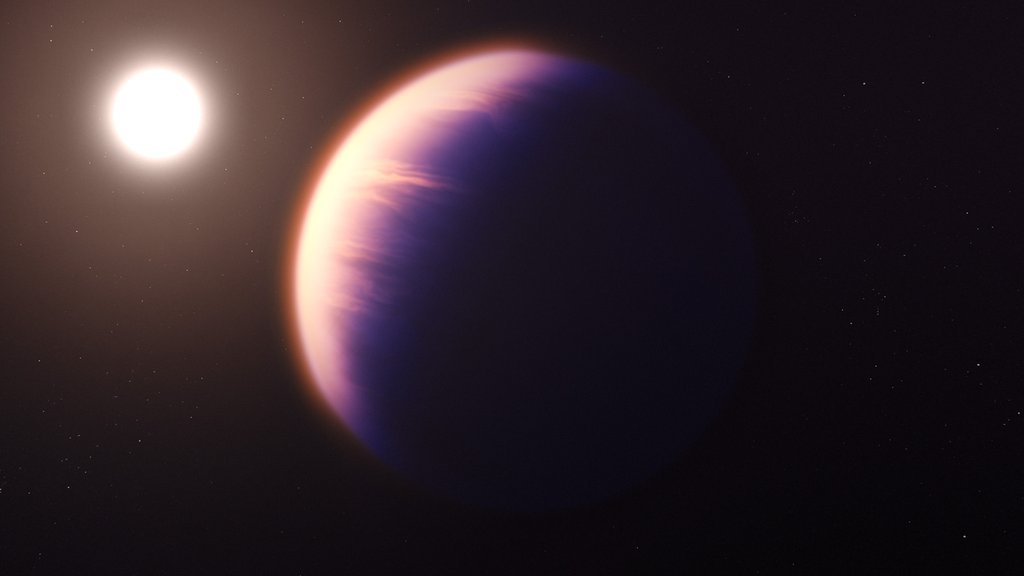The James Webb Space Telescope has opened a new era in exoplanet research after it clearly detected carbon dioxide in the atmosphere of an exoplanet for the first time. The gas giant orbiting a sun-like star is located 700 light-years away, and the results tell us about the formation and origin of the planet. Measurement report study The temper nature Accepted for publication in a scientific journal. The article proves that in the future the Webb Space Telescope may also be able to detect and measure the amount of carbon dioxide in the thin atmosphere of small rocky planets.
WASP-39 b, a hot gas giant, is about a quarter of Jupiter’s mass (about the mass of Saturn) and 1.3 times that of Jupiter. Extreme bloating is partly caused by high temperature (about 900°C). In contrast to the cooler and more compact gas giant in our solar system, WASP-39 b orbits close to its star (about one-eighth of the distance from Mercury to the Sun), which makes it roughly the same. It takes 4 days off the ground. The planet was discovered by ground-based telescopes in 2011, when it passed in front of its star and caused a slight decrease in its light (planetary transits).
Measurements by other telescopes, such as the Hubble Space Telescope or the Spitzer Space Telescope, have already revealed the presence of water vapor, sodium and potassium in the atmosphere of WASP-39 b. Thanks to the unique infrared sensitivity of the Webb Space Telescope, the presence of carbon dioxide has now been confirmed. Covering exoplanets similar to WASP-39 b, whose orbits are not seen from above, but as close to the edge as we see them from us, provides a unique opportunity to observe the planets’ atmospheres. During occultation, the planet covers part of the light of the central star, and part of it passes through the atmosphere of an exoplanet (transmission).

Since different gases absorb light at different wavelengths, the composition of a planet’s atmosphere can be determined by analyzing small differences in the brightness of light passing through the atmosphere. With its amplified atmosphere and frequent mantles, WASP-39 b is an ideal target for such spectroscopic measurements.
For research, NIRSpec is sensitive to Webb’s near-infrared (near infrared spectrometer) A spectrophotometer was used. The spectrum of the resulting exoplanet shows a smaller peak between 4.1 and 4.6 microns, which is the first clear evidence of carbon dioxide in the atmosphere of an exoplanet. So far, no observatory has been able to measure the transmission spectrum of an exoplanet with such detail in the range between 3 and 5.5 microns. This region of the spectrum is especially important in determining the frequency of water, methane, and carbon dioxide.
By understanding the composition of the planet’s atmosphere, we can learn more about the origin and evolution of the planet. Carbon dioxide is a sensitive tracker of planetary history, by measuring the amount of solids and the amount of gaseous substances from which the giant gases were formed. In the next decade, the James Webb Space Telescope will examine a large number of planets in detail, so it will also become clear how special the planets of our solar system are.
NIRSpec data is Early Release Program Announced within its framework, its purpose is to quickly analyze measurement data and develop various open source tools to process it. This enables new discoveries to be contributed from around the world, ensuring the best possible scientific results from observations for decades to come.
source: NASA JPL
Cover image: Illustration of the gas giant WASP-39 b (Source: NASA, ESA, CSA, Joseph Olmsted (STScI))
Suspension












































